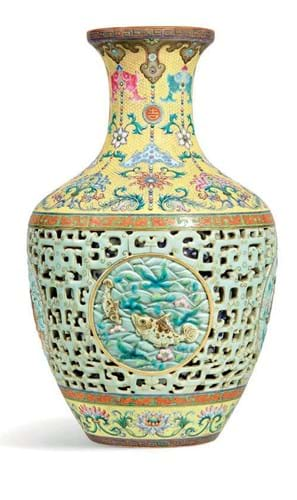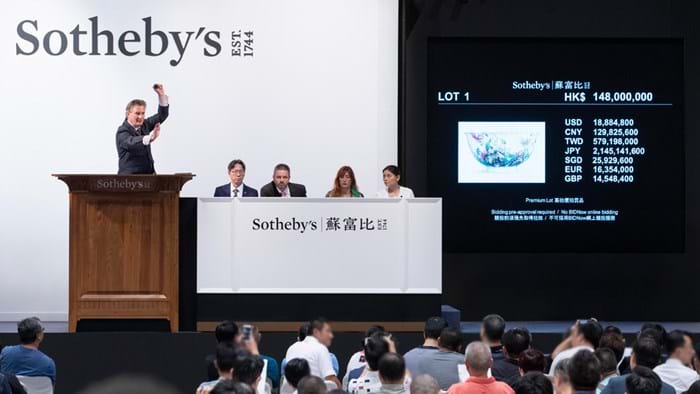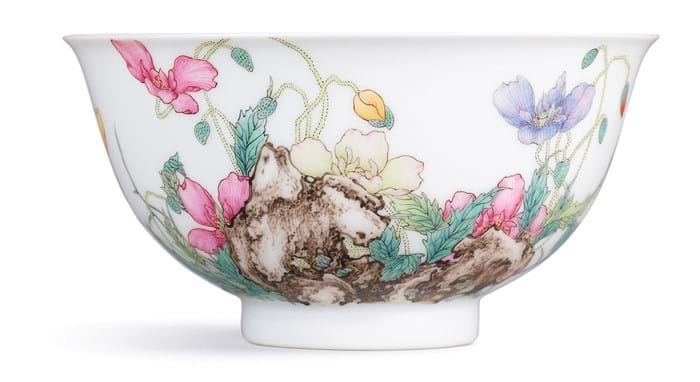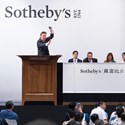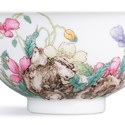The so-called Yamanaka reticulated vase takes its name from the famous firm of Yamanaka & Co, founded by Yamanaka Sadajiro (1865-1936), that sourced objects in China for sale in London and the US.
The vase was included in the 1905 Yamanaka exhibition in New York and was later acquired by a private Japanese collector in 1924. It has not been offered for sale since.
These 16in (41cm) high double-walled vessels with yang cai enamels were among the most complex pieces of porcelain ever conceived by Tang Ying, the celebrated superintendent of imperial porcelain manufac ture at Jingdezhen, for the emperor Qianlong (1736-95).
The Yamanaka and Bainbridge vases appear to be almost identical.
Carved and painted with roundels of four pairs of fish below rococo-inspired motifs on a yellow graviata ground, an inner blue and white vase can be glimpsed through the openwork lattice.
The guide for the Yamanaka vase, sold on October 3, has been set at a conservative HK$50-70m (£5m-7m), although Sotheby’s was expecting it “to fetch multiples of the estimate”. Accordingly the hammer price of HK$130m (£12.75m) perhaps came a little under the boldest predications.
Private deal
The so-called Bainbridge vase – offered by auctioneer Peter Bainbridge in Ruislip at the height of the Chinese buying boom on the evening of November 11, 2010 – posted the highest price ever recorded for Chinese art at auction when it was hammered down at £43m.
Although it made international headlines, the transaction was never completed. A private treaty deal brokered by Bonhams was agreed in 2013 at a price thought to be in the region of £20m-25m.
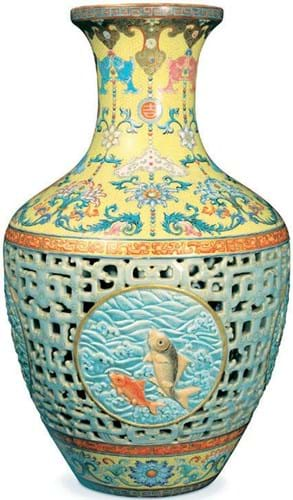
The so-called ‘Bainbridge vase’ hammered down at £43m in 2010 but later the subject of a private sale.
The October 3 sale included another outstanding piece of Qianlong porcelain – a falangcai poppy bowl. An indication of where the market currently sees the price ceiling for the best examples of Qing porcelain, it took a similar hammer price of HK$148m (£14.5m).
The 4.6in (11.8cm) bowl is the only recorded example of this design outside of the National Palace Museum, Taipei. Enamelled on the exterior with an intricate design of poppies issuing from rockwork, the interior includes a finger-citron, apple and cherries.
The poetic inscription below the rim can be translated: They welcome the wind, as if it could chase the sound of singing that has arisen. The night full of rain, how it causes the dancing sleeve to hang down!
The price compares with a Kangxi (1654-1722) puce-enamel falangcai bowl, on the market for the first time in 30 years, sold for HK$210m (£19.1m) at the equivalent sale in April this year, a record for Kangxi porcelain.
Sotheby’s Hong Kong Chinese works of art autumn sales series continues today.


